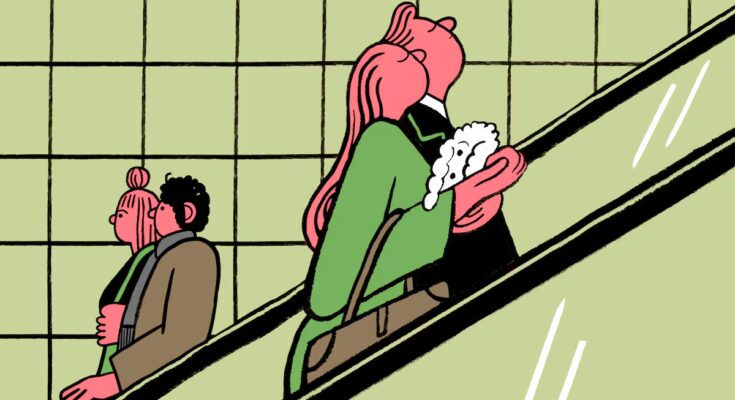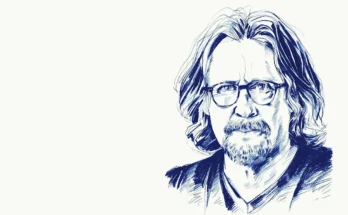Social class runs through all aspects of life, and love is no different. In Spain, couples are not formed randomly, but are usually determined by socioeconomic issues, meaning that a person joins with someone who is more similar to them in terms of income and wealth. At the top of the ranking the trend skyrockets. Those who earn more and have more find themselves with three times the intensity of what would happen in a society where connections occurred completely randomly.
Discovery goes beyond simple intuition or an after-dinner conversation. This is pure and simple statistics. Researcher Silvia de Poli, from the Complutense University of Madrid, exploited microdata from the Ministry of Finance and the National Institute of Statistics (INE) to answer a question as simple as it is powerful: what would happen to inequality if connections were formed randomly, as if people rolled out of a bingo drum? The result is clear. If this were the case, the economic gap both in terms of income and assets would be reduced.
The simulation was carried out with three scenarios of heterosexual couples. The model requires systematic comparison of samples and, due to data availability, cannot be run with same-sex couples. The first scenario could be called random, with people matching with each other without looking at pay stubs or inheritances. Another would be perfect homogamy, where the richest marry the richest and the poorest marry the poorest. The third would be total heterogamy, where the one above joins the one below and so on. Spain is closer to the second scenario, a form of selective union.
The researcher created a diagram showing the phenomenon. To do this he organized all the people according to their economic situation and divided them into 10 groups of the same size to see how they interact with each other. The first group or decile represents the poorest 10% and the last the richest 10%. When the value is close to a tie (represented with a 1) it means that the pairings occur as if they were the result of chance; when it drops below, members of different groups barely cross paths; and when it is exceeded, people tend to marry their peers.
In Spain, values skyrocket in the richest part of the distribution, as confirmed by the study that De Poli and other authors published in the archives of the European Commission. Men and women in the top 10% of earners are 3.1 times more likely to get married than if everything were a matter of chance. The low and middle sections tend to move in equilibrium, reflecting that reality is very similar to chance. For his part, a very rich man is five times less likely (0.2) to marry a woman with a low-to-middle income compared to a purely random scenario.
The trend is more clearly observed in the stock sector, a more stable indicator. While income is more volatile and reflects only part of a person’s situation – which can also change with retirement or reduced working hours – wealth tends to remain stable over time. And here the men and women of each group meet in an almost harmonious way along the entire distribution. The richest with the richest and the poorest with the poorest.
There are multiple ways to deal with the phenomenon. Nuria Badenes, researcher at the Institute of Fiscal Studies, took advantage of the INE’s survey of living conditions and confirms this type of economic kinship. On average, the members of a couple belong to the same income bracket in 16% of cases, but in the last decile the percentage doubles, reaching 33%. “Choosing a partner is a decision that cannot be judged to be fair or unfair, but the fact that people with higher incomes choose to get together helps perpetuate differences in income distribution,” he believes.
From the master to the altar
Where does all this come from? Diederik Boertien, a sociologist at the Center for Demographic Studies in Barcelona, explains that selective union responds to both individual preferences and social structures. People tend to look for partners with resources or characteristics associated with status, such as education, lifestyle and, of course, income. This creates “a competition in which the most attractive people, i.e. those with the most resources, end up together, while the others couple up or remain single”.
The very organization of society, with its internal rhythms and boundaries, favors bonds within the same class. “The people we interact with in daily life tend to belong to a similar socioeconomic stratum. Family, friends, study and work colleagues, neighbors… they all tend to have more or less similar economic resources,” continues Boertien. And these, he adds, serve as a barrier to entry into groups where compound surnames abound. “It is much more difficult to meet a rich person than a poor one” because “wealth allows the creation of exclusive spaces where only the privileged have access and know each other”.
This is a “clearly visible” trend among high-net-worth clients, explains a consultant who works at a private banking firm. “The normal thing is for members of a couple to have very similar levels of income, assets and investments.” They tend to share not only financial strategy, but also a similar economic base, “which makes it easier for them to jointly structure their assets,” he says.

Homogamy contributes to perpetuating the economic divide in Spain. According to De Poli data, couples in the richest 10% have, on average, almost double the income and wealth of those in the previous group. And they accumulate 12 times the income and 42 times the net wealth of those in the first decile.
In the configuration of the couple, recalls De Poli, there are unobservable factors such as personality, values or cultural affinities. Among those that can be measured, one of the best to explore the origin of socioeconomic segregation is the level of education, since, as Badenes points out, income grows as the level of education increases. The INE data reflects that couples with higher income levels are those who, by far, have the smallest educational differences between their members.
To reach this conclusion, Badenes looked at how much educational distance there is within each union, from a very wide gap – a college student with someone who didn’t finish high school – to couples whose members have virtually identical studies. The higher the economic level, the more similar the couples’ educational paths are. At the social base there are people with very different studies, but at the top there are almost always people with a similar, generally higher, educational background.
A sentimental elevator
From here, De Poli delves into the effects of assortative mating and tries to discover what would happen to the distribution of wealth in a hypothetical framework of random connections. In this scenario, couples in the lowest 80% of income, especially those at the bottom of the ranking, would be better positioned than in reality, while those in the remaining 20% would lose economic power. The difference is mainly explained by income, although wealth, especially main residence, also plays an important role in this redistribution.

When the richest people concentrate resources and match with each other, they combine fortunes and advantages that not only multiply their purchasing power but also ensure that their children are born with above-average wealth. At the top, couples constitute real economic strengths, while those with fewer resources face greater obstacles in accessing equivalent opportunities.
The study suggests that taxation and other public policies of countries partially moderate the effect of homogamy on inequality, but are unable to stop the gradual process of wealth accumulation resulting from selective unions.



